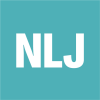Boundary Management Preferences, Boundary Control, and Work-Life Balance among Full-Time Employed Professionals in Knowledge-Intensive, Flexible Work
DOI:
https://doi.org/10.19154/njwls.v4i4.4705Keywords:
Health, working environment & wellbeing, Work/life balance, Organization & managementAbstract
Profound changes are taking place within working life, where established boundaries between work and personal life are challenged by increased global competition, ever-faster changing markets, and rapid development of boundary transcending information and communication technologies (ICT). The aim of this study was to investigate boundary management preferences in terms of keeping work and personal life domains separated or integrated, that is, segmenting or blending of domains, the perception of being in control of one´s preferred boundaries, and work-life balance among employees at a Swedish telecom company (N = 1,238, response rate 65%, men 73%, mean age 42 years). Psychosocial work factors, individual characteristics, sociodemographic factors, and work-life balance were investigated in relation to boundary management preferences and perceived boundary control. For high boundary control among segmenters, nearly all the studied psychosocial work factors were significant. Among integrators, this was the case only for clear expectations in work. For both groups, the individual capacity for self-regulation was associated with high boundary control. Regarding sociodemographic factors, cohabiting women with children who preferred segmentation had low boundary control. Finally, there was a main effect of boundary control on work-life balance. In particular, male segmenters perceiving high boundary control had better work-life balance than all others. Conclusions of the study are that segmenters need external boundaries in work for succesful boundary management. Moreover, self-regulation seems a crucial boundary competence in knowledge- intensive, flexible work. Results are of value for health promotion in modern work organizations in supporting employees achieving successful boundary control and subsequent work-life balance.Downloads
Published
How to Cite
Issue
Section
License
The Copyright Holder of this Journal is the authors and the Journal. Normally the journal use the CC-BY NC-ND 4.0 licence.
Exceptions to the license terms may be granted
If you want to use content in the Journal in another way then described by this license, you must contact the licensor and ask for permission. Contact Annica Asp at annica.asp@kau.se. Exceptions are always given for specific purposes and specific content only.
Sherpa/Romeo
The Journal is listed as a blue journal in Sherpa/Romeo, meaning that the author can archive post-print ((ie final draft post-refereeing) and author can archive publisher's version/PDF.
Copyright of others
Authors are responsible for obtaining permission from copyright holders for reproducing any illustrations, tables, figures or lengthy quotations previously published elsewhere.
Archives policy
All published material is archived at the Danish Royal Library in conformity with the Danish rules of legal deposit.
Plagiarism screening
We do not screen articles for plagiarism. It is the responsibility of the authors to make sure they do not plagiate.



